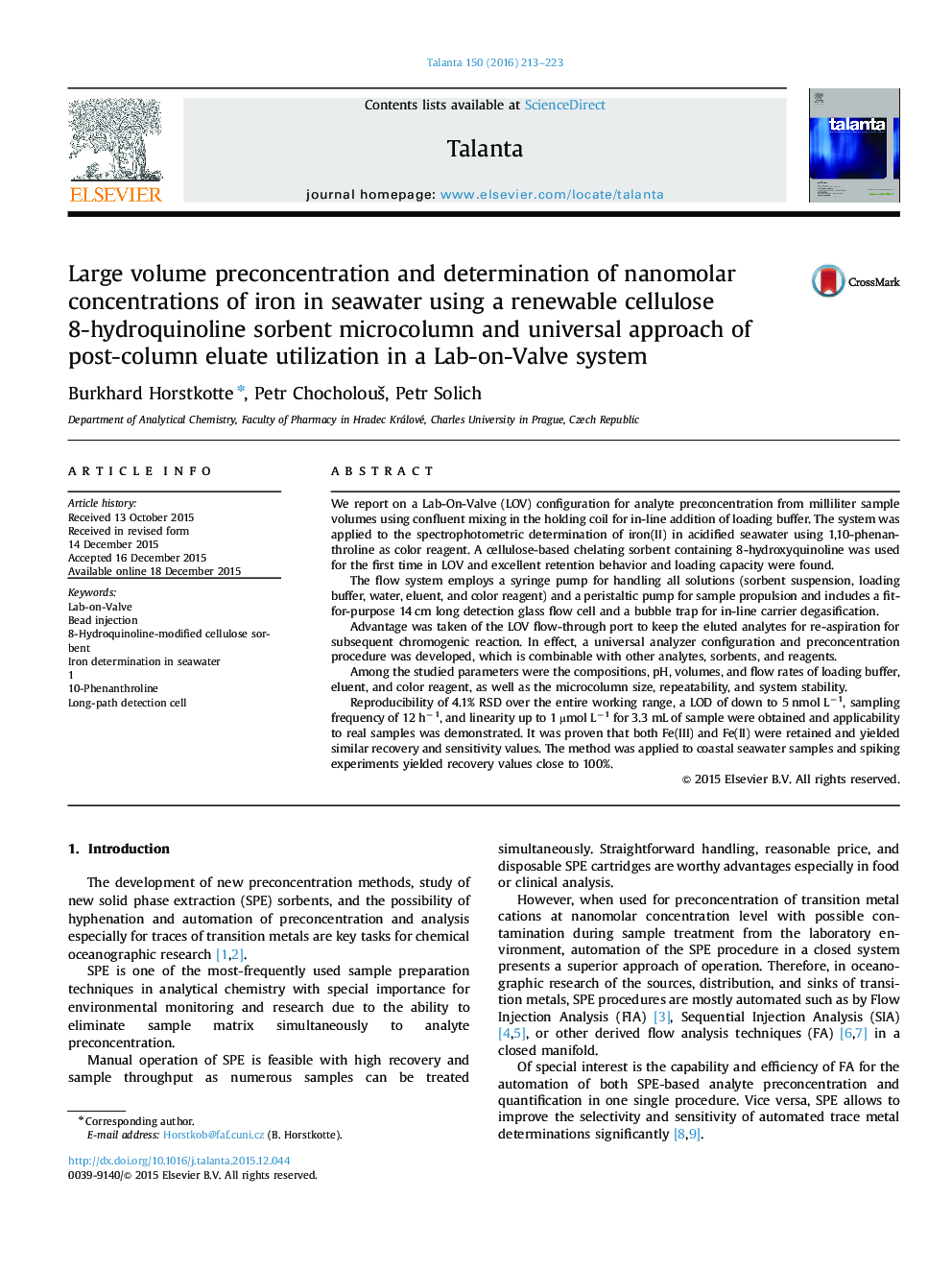| Article ID | Journal | Published Year | Pages | File Type |
|---|---|---|---|---|
| 1242165 | Talanta | 2016 | 11 Pages |
•Lab-On-Valve employing bead injection is used for iron preconcentration in seawater.•Handling of cellulose beads is firstly studied on Lab-on-Valve platform.•A novel configuration allowing easy elute recover for later reaction is proposed.•Universal approaches for bead handling and bubble removal from carrier are proposed.•4.1% RSD of peak height, 2.3% of column formation & LOD of 5 nmol L−1 were found.
We report on a Lab-On-Valve (LOV) configuration for analyte preconcentration from milliliter sample volumes using confluent mixing in the holding coil for in-line addition of loading buffer. The system was applied to the spectrophotometric determination of iron(II) in acidified seawater using 1,10-phenanthroline as color reagent. A cellulose-based chelating sorbent containing 8-hydroxyquinoline was used for the first time in LOV and excellent retention behavior and loading capacity were found.The flow system employs a syringe pump for handling all solutions (sorbent suspension, loading buffer, water, eluent, and color reagent) and a peristaltic pump for sample propulsion and includes a fit-for-purpose 14 cm long detection glass flow cell and a bubble trap for in-line carrier degasification.Advantage was taken of the LOV flow-through port to keep the eluted analytes for re-aspiration for subsequent chromogenic reaction. In effect, a universal analyzer configuration and preconcentration procedure was developed, which is combinable with other analytes, sorbents, and reagents.Among the studied parameters were the compositions, pH, volumes, and flow rates of loading buffer, eluent, and color reagent, as well as the microcolumn size, repeatability, and system stability.Reproducibility of 4.1% RSD over the entire working range, a LOD of down to 5 nmol L−1, sampling frequency of 12 h−1, and linearity up to 1 µmol L−1 for 3.3 mL of sample were obtained and applicability to real samples was demonstrated. It was proven that both Fe(III) and Fe(II) were retained and yielded similar recovery and sensitivity values. The method was applied to coastal seawater samples and spiking experiments yielded recovery values close to 100%.
Graphical abstractFigure optionsDownload full-size imageDownload as PowerPoint slide
